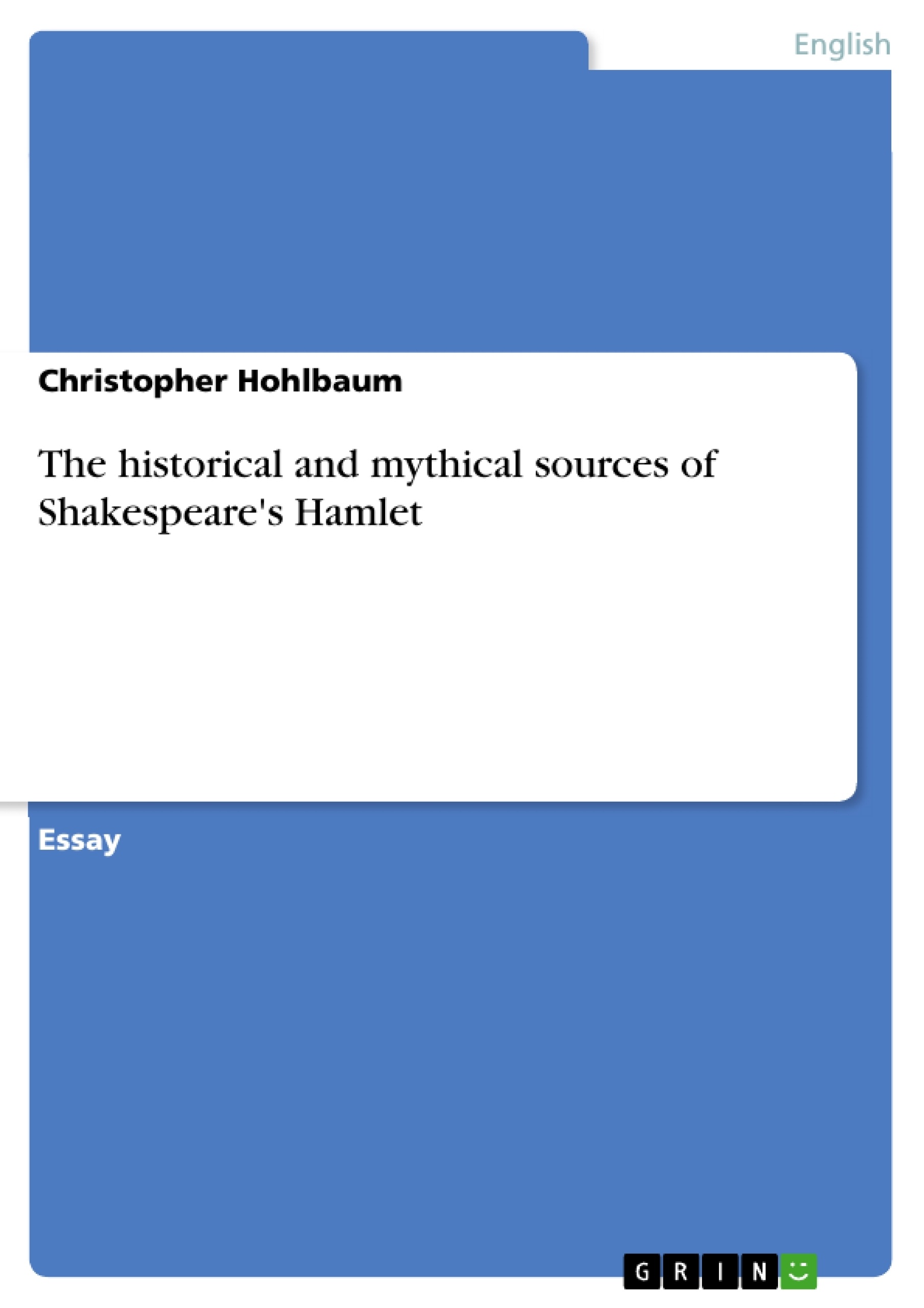In this essay I will discuss the historical and mythical sources of Shakespeare's Hamlet, and briefly their relationship among one another. Although it is difficult to separate these into clearly distinguishable and exclusive categories, and perhaps even misleading to do so, I will, for getting the main facts in, try to bring them into a logical context. It will be seen that they will overlap.
When we talk about Shakespeare's sources for Hamlet, we are talking about Lucius Junius Brutus, who tries to save himself by feigning stupidity to his uncle, the king. About Nero, the insane murderer of his mother, of whom Uncle Claudius feigns in his youth stupidity as well for escaping being murdered and finally about Orestas, who becomes mad after his mother was murdered.
Inhaltsverzeichnis (Table of Contents)
- Shakespeare's Sources for Hamlet
- The "Ur-Hamlet" and Early Versions
- The Amlethus-Saga and its Influence
- Shakespeare's Creative Genius and Hamlet's Enduring Impact
Zielsetzung und Themenschwerpunkte (Objectives and Key Themes)
This essay aims to explore the historical and mythical sources that influenced Shakespeare's creation of Hamlet, examining their relationships and contributions to the play's development. While acknowledging the complexity of these sources and their potential overlap, the essay attempts to establish a logical context for understanding them.
- The historical and mythical sources of Shakespeare's Hamlet
- The role of the "Ur-Hamlet" and its relationship to the final play
- The influence of the Amlethus-saga on Shakespeare's Hamlet
- Shakespeare's creative genius and the enduring impact of Hamlet
- The universal themes of morality, action, and human nature in Hamlet
Zusammenfassung der Kapitel (Chapter Summaries)
- The essay begins by introducing the primary historical and mythical figures who have been suggested as sources for Hamlet, including Lucius Junius Brutus, Nero, Orestes, and the Amlethus-saga. It discusses how Shakespeare combined elements from these sources to create a unique and enduring character.
- The second chapter explores the question of an earlier version of Hamlet, the "Ur-Hamlet", and its possible relationship to the final play. It examines evidence from various sources, including letters and records, and discusses the possible impact of this earlier version on Shakespeare's creative process.
- The third chapter delves into the Amlethus-saga, tracing its origins in the "Historia Danica" of Saxo Grammaticus and its translation by Francois de Belleforest. It compares the Amlethus-saga to Shakespeare's Hamlet, highlighting both similarities and differences.
- The fourth chapter analyzes Shakespeare's creative genius and the lasting impact of Hamlet. It examines how the play's themes of morality, action, and human nature resonate across centuries and cultures, making Hamlet a timeless character.
Schlüsselwörter (Keywords)
Key terms and concepts explored in this essay include: Shakespeare, Hamlet, sources, historical figures, myths, "Ur-Hamlet", Amlethus-saga, creative genius, universal themes, morality, action, human nature, enduring impact.
- Citation du texte
- Christopher Hohlbaum (Auteur), 2003, The historical and mythical sources of Shakespeare's Hamlet, Munich, GRIN Verlag, https://www.grin.com/document/89398




